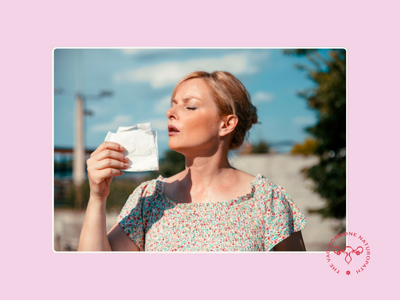· Hormones · 3 min read
BV, Thrush or Hormone Symptoms - Why a Change in Season Can Stir Up Symptoms
Spring can trigger vaginal symptoms like thrush, BV, or hormonal changes. Here’s why it happens — and how to start finding clarity without guesswork.

As the weather warms up, many women notice familiar discomfort returning — discharge changes, itching, or irritation that doesn’t seem to settle.
Is it thrush? BV? Or something hormonal? The truth is, it can be hard to tell — and guessing often leads to repeat cycles of creams, prescriptions, and frustration. As we look towards the change in season (especially from winter to spring, I feel) its a time of renewal. Coming out of the winter hibination and back out into the world. But it also brings changes in immunity, allergies, and microbiome balance that can influence vaginal health. Let’s break it down.
| Symptom | Thrush | BV | Hormone shifts |
|---|---|---|---|
| Discharge | Thick, white, cottage cheese like | Thin, grey-white, watery | May vary throughout the cycle, “normal” is clear and sticky, eggwhite consistency increasing at ovulation then decreasing to the end of the cycle |
| Odour | Usually no odour | Fish-like, unpleasant odour | No odour |
| Itching | Common, may also be redness and/or dryness | Less common, may also be redness, burning | Occasional dryness or irritation |
| Triggers | Low oestrogen, antibiotics, sweating/heat, high processed food diet, new partner, worse for tight clothing | New partner, antibiotics, low oestrogen, IUD (eg mirena), smoking, stress | Menstrual phase, stress |
| Standard Relief | Temporary from antifungals | Temporary with antibiotics | May shift as the menstrual cycle shifts to a new phase |
Spring is a season of difference
Spring can bring with it some new challenges to the body - especially for those in the Southern parts of Australia where hayfever and allergies seems to be more prominant. These immune challenges can lower resistance and make imbalances easier to flare. But it’s not just the immune impacts of spring that can cause flaring vaginal and hormone-related symptoms:
- Lifestyle changes - More socialising, sugar, alcohol, and warmer weather can shift the microbiome.
- Hormone changes - Perimenopause and natural cycle variations can mimic or amplify symptoms.
- Stress - A busy season from all angles can keep the nervous system running high.
The problem with self diagnosis
Many women end up stuck in a loop - treating each and every flare as thrush, repeating antibiotics/antifungals, feeling lost and frustrated that symptoms keep coming back (or don’t improve in the first place).
Without clarity and guidance, the cycle just continues, without any true resolution.
It’s not about rushing to the next quick fix, its about understanding what your body truly needs. That’s why I have resources like my Vaginal Health Clarity Guide - to start to build that deeper understanding. Its about having evidence based information, without the overwhelm.
And, if you want to go deeper, a Vag Hormone Assessment starts a personal conversation. One that identifies a way forward in combining advanced testing with whole-person care. Creating space for both the science and the story behind recurring symptoms.
A fresh start this spring
Spring invites renewal — not just in the home or the garden, but in the body, too. If symptoms are showing up again, maybe this season is an invitation to stop the cycle and start fresh.
To get your copy of the Vaginal Health Clarity Guide, email me at hello@thevaghormonenaturopath.com.au
Or to book your Vag Hormone Assessment - a confidential chat with me so we can see what the next steps are for you, just go to https://bit.ly/BookWithAlison and book today.




